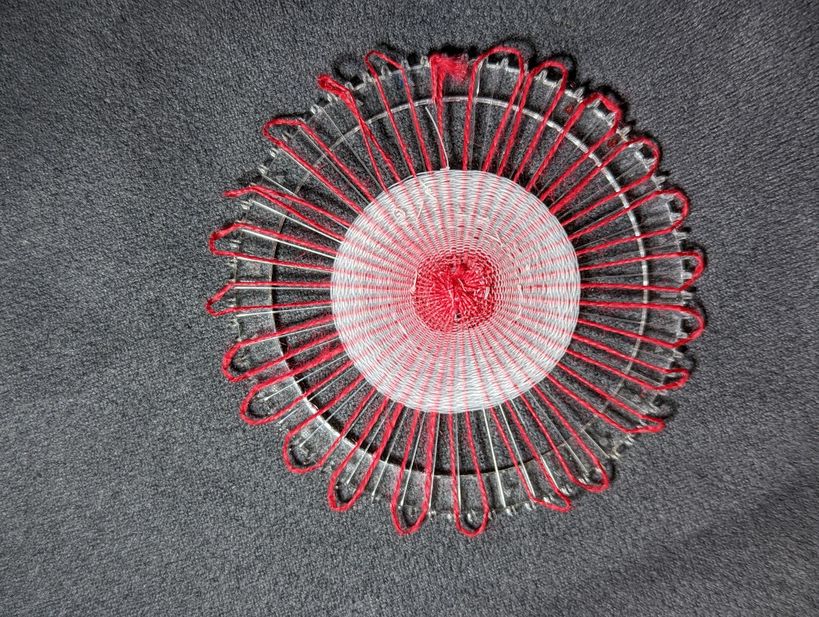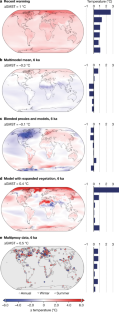2023-02-21 フィンランド・アールト大学

The team used radial weaving to make a reactive cone from LCE yarns, linen and nylon. Photo: Pedro Silva/Aalto University
◆この新しいファブリックは、従来の技術と新しいアプローチを組み合わせたものです。1980年代に開発された液晶エラストマー(LCE)。LCEは、熱や光などの刺激に反応するスマートな材料で、薄膜としてソフトロボティクスに利用されてきた。LCEは繊維化されたものの、これまでのところ織物にはなっていない。
◆今回、アールト大学の多機能材料デザイン研究グループ(Jaana Vapaavuori教授率いる)のチームは、ケンブリッジ大学の研究者と共同で、LCEヤーンを用いて従来の繊維工芸技術で織物を作り、その挙動をテストしました。
◆LCE糸をさまざまなパターンで織り、平織り、サテン、綾織、緯糸リブ織りを作りました。研究チームは、柔らかいLCE糸と硬いLCE糸を使って、それぞれのパターンを2種類ずつ作り、赤外線ランプの熱に異なる布がどう反応するかをテストした。
◆その結果、すべてのLCE繊維が温まると収縮しましたが、その正確な反応は繊維によって異なりました。この変化は可逆的で、温度が下がると元の形状に戻りました。
◆当初は、このような新素材に工業用繊維の技術を用いることのインパクトは明確ではありませんでした。2種類のLCE糸の伸縮性は、スパンデックスに匹敵するか、それ以上に柔らかいのです。つまり、繊維産業でこの糸を使えるかどうか、従来の糸との組み合わせが動きにどう影響するかを理解することが不可欠でした」と、この研究を主導したアールトの博士研究員、ペドロ・シルバは言う。
◆次に研究チームは、LCE糸とリネン、ナイロンを放射状に組み合わせ、熱を加えると円錐形に浮き上がるような円を編み上げた。このパターンを加熱すると、LCE糸が収縮し、布が円錐形に引き上げられる。そして、冷えると円錐が緩み、平らな円形に戻りました。
◆この研究成果は、『Advanced Materials』に掲載された。
<関連情報>
- https://www.aalto.fi/en/news/shrinking-from-the-heat
- https://onlinelibrary.wiley.com/doi/10.1002/adma.202210689
液晶エラストマーフィラメントの製織による活性繊維ファブリック Active Textile Fabrics from Weaving Liquid Crystalline Elastomer Filaments
Pedro E. S. Silva, Xueyan Lin, Maija Vaara, Mithila Mohan, Jaana Vapaavuori, Eugene M. Terentjev
Advanced Materials Published: 13 January 2023
DOI:https://doi.org/10.1002/adma.202210689
Abstract
Active fabrics, responding autonomously to environmental changes, are the “Holy Grail” of current development of smart textiles. Liquid crystal elastomers (LCEs) promise to be the base materials for large-stroke reversible actuation. The mechanical behavior of LCEs matches almost exactly the human muscle. Yet, it was not possible to produce filaments from LCEs that would be suitable for standard textile production methods, such as weaving. Based on our recent development of next-generation LCE fibers, here we present the crafting of active fabrics incorporating LCE yarn, woven on a standard loom, giving us control over the weave density and structure. We test two types of LCE yarns (soft and stiff) and their incorporation into several weaving patterns, and identify our “champions”: the twill pattern with stiffer LCE yarn that shows the greatest blocking force of 1–2 N/cm, and the weft rib pattern that shows over 10% reversible actuation strain on repeated heating cycles. We also demonstrate reversible 3D shape changes of active fabric by utilizing the circular weaving patterns that lead to cone shapes upon heating. The seamless combination of active LCE yarns into the rich portfolio of existing passive yarns can be transformative in creating a new type of stimuli-responsive actuating textiles.
This article is protected by copyright. All rights reserved



